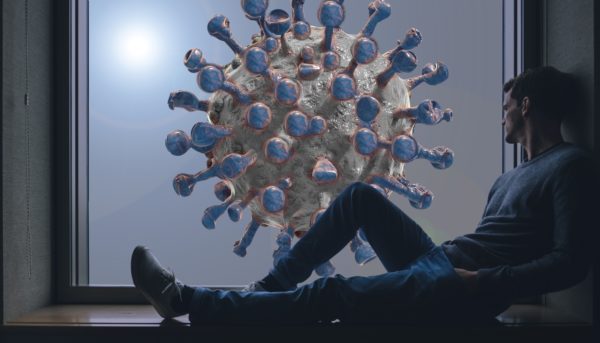
The coronavirus pandemic has been labeled a mass-disabling event, where millions in the U.S. population have become infected with Covid-19 and thus considered disabled under federal, state and local disability laws.
According to data from the U.S. Centers for Disease Control and Prevention (CDC), an estimated 57.7% of the U.S. population have had a Covid-19 infection as of February 2022. According to the U.S. Census Bureau, there are an estimated 332,403,650 people living in the U.S. as of Jan. 1, 2022. There are an estimated 191,796,906 people in the U.S. who have had Covid-19, a group that we will label as the “New Majority.”
However, the CDC said there were only 97,990,415 reported cases as of Nov. 18, 2022. The number of reported cases is likely underreported due to increased vaccination rates, unreported positive home tests results, lack of mandatory reporting by public officials, and increased public ambivalence regarding the pandemic.
Based on the above data, there are an estimated 191,796,906 people living in the U.S. who have a disability called Covid-19. (The CDC has reported that 61 million adults in the U.S. live with a disability, but it is unclear if this number includes Covid-19 infections).
On the flip side, there are 140,606,744 people in the U.S. who never contracted Covid-19. This number will dwindle as more people contract Covid-19 in the coming years after each new variant wave arises. So, this “New Minority” will grow smaller.
But why is this important? The New Minority will have a viewpoint about public policy, business and the law, and they will want their voices to be heard on the present issues of the day. By implication, the New Minority will be nondisabled. Their viewpoint may be dramatically different than the New Majority in the population already infected. This discourse has yet to rise to the national level, but it will. All differences in and among the U.S. population eventually assert their influence in the public debate at some point in time.
If nearly 60% of the U.S. population has a disability, then Covid-19 has also become a mass-equalization event. The disease affects all races, genders, ages, nationalities. Covid-19 may just be the one event where we all look at each other equally, not clouded by some form of bias associated with skin color, sexual orientation, gender, age, nationality, political affiliation, wealth group, etc.
Now, you have probably concluded that not every case of Covid-19 renders someone disabled and thus the term “disability” should not apply. Certainly, we now know there are a significant number of the U.S. population that the Mayo Clinic defined as possibly having “symptoms that last a long time afterward … sometimes called post-Covid-19 syndrome, post-Covid conditions, long Covid-19, long-haul Covid-19, and post-acute sequelae of SARS Cov-2 infection (PASC).” But to say that everyone who has recovered from Covid-19, not once but twice and even three times, does not have a disability is premature. As of this date, we have no understanding of the long-term impact of Covid-19 on the health of the population.
According to the Mayo Clinic, post-Covid-19 syndrome involves a variety of new, returning or ongoing symptoms that people experience more than four weeks after getting Covid-19. In some people, post-Covid-19 syndrome last months or years or causes disability. The most commonly reported symptoms of post-Covid-19 syndrome, including fatigue, fever, and lung or respiratory issues, including difficulty breathing or shortness of breath and cough. Other possible symptoms include neurological symptoms or mental health conditions such as difficulty thinking or concentrating, headache, sleep problems, dizziness when standing, pins-and-needles feeling, loss of smell or taste, and depression or anxiety.
Furthermore, other symptoms can include joint or muscle pain, heart symptoms or conditions, including chest pain and fast pounding heartbeat, digestive symptoms, including diarrhea and stomach pain, blood clot and blood vessel (vascular) issues, and other conditions, including a rash and changes in the menstrual cycle.
One would argue these post Covid-19 syndrome symptoms constitute a physical disability, and in some cases a comorbid mental disability, protected by federal, state, and local disability laws. Nearly 60% of the U.S. population is now disabled and protected against disability discrimination in employment. Post-Covid-19 syndrome symptoms qualify under the Americans with Disabilities Act because Covid-19 adversely and substantially limits one or more major life activities.
In addition, every person who has had Covid-19 now has a history or record of the impairment and may be perceived by others as having the impairment, i.e., employees who suffer from long haul Covid-19 fatigue and cognitive issues which impair ability to work.
If you have or had Covid-19, you are protected against disability discrimination and can request reasonable accommodations at work. Do not hesitate to use your newly protected status as a shield to protect yourself from your employer”™s unlawful and discriminatory conduct while working and seeking reasonable accommodations such as remote working and flexible work schedules.
But you can also use your disability as a sword in the event you are being laid off or terminated from your employment. All you need to do is spell out the factual narrative regarding how your Covid-19 illness adversely affected your ability to do your job and led to your termination. Specifically, you should assert your Covid-19 disability and resulting discrimination in your severance negotiation with your employer.
Mark P. Carey is managing partner and an employment law attorney at Carey & Associates P.C. in Southport. An earlier version of this article originally appeared on the law firm”™s blog.





















